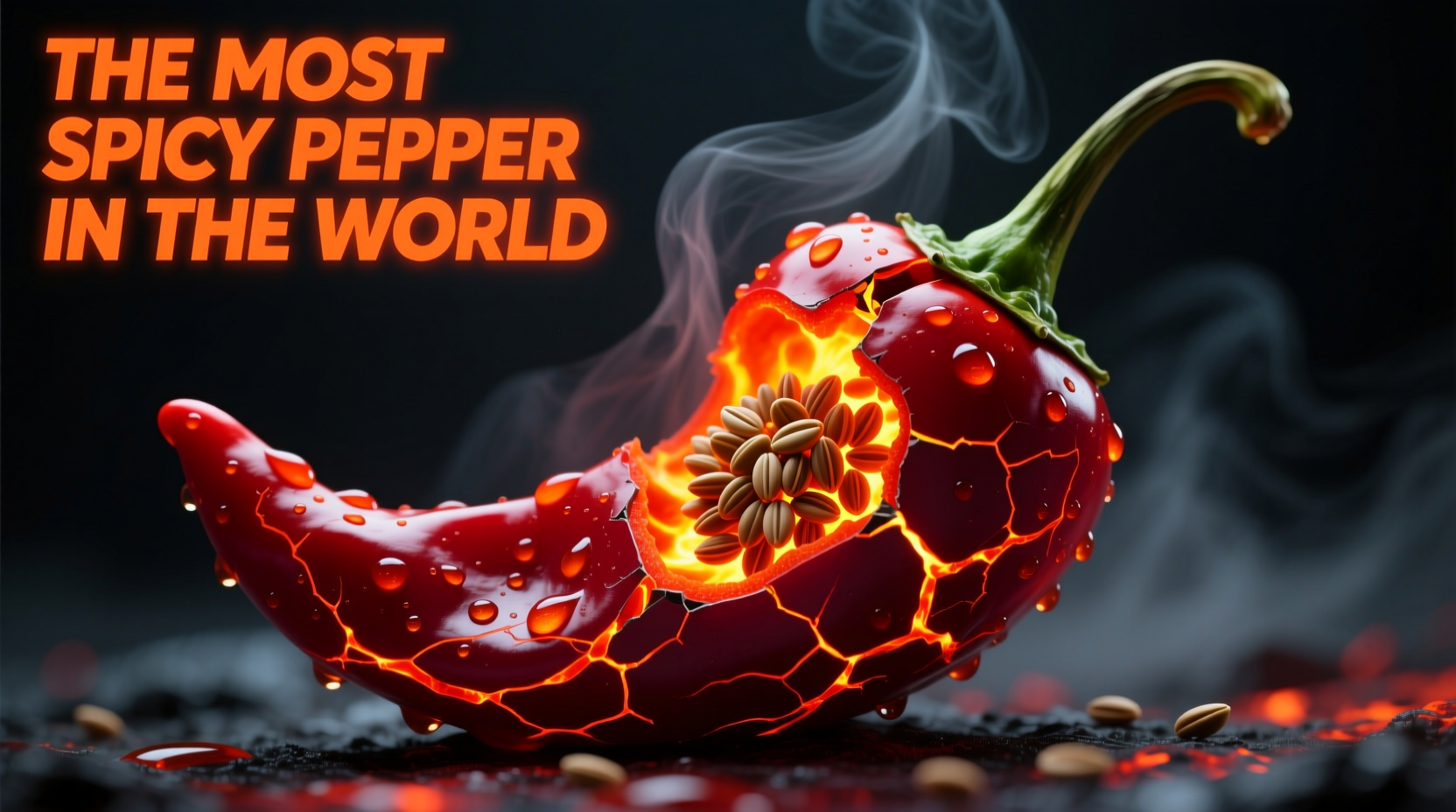For spice enthusiasts and culinary adventurers, understanding the pinnacle of pepper heat isn't just about bragging rights—it's about appreciating the science, history, and practical applications of these fiery botanical marvels. This comprehensive guide delivers verified information about the world's hottest peppers, their characteristics, and how to safely engage with extreme heat levels.
The Science Behind Extreme Pepper Heat
Pepper heat comes from capsaicinoids, chemical compounds concentrated in the placenta (white ribs) of chili peppers. The Scoville Scale, developed by pharmacist Wilbur Scoville in 1912, measures these compounds' concentration. Originally using human testers, modern laboratories now use High-Performance Liquid Chromatography (HPLC) for precise measurements, converting results to Scoville Heat Units.
Understanding these measurements helps contextualize just how extreme Pepper X's heat level truly is. For perspective:
| Pepper Variety | Scoville Heat Units | Heat Comparison |
|---|---|---|
| Pepper X | 2,693,000 SHU | 270+ times hotter than a jalapeño |
| Carolina Reaper | 1,641,500-2,200,000 SHU | 200 times hotter than a jalapeño |
| Trinidad Moruga Scorpion | 1,200,000-2,000,000 SHU | 150 times hotter than a jalapeño |
| Jalapeño | 2,500-8,000 SHU | Baseline for comparison |
Pepper X: The Current Heat Champion
Developed by Ed Currie of the PuckerButt Pepper Company in South Carolina, Pepper X dethroned the Carolina Reaper after more than a decade of selective breeding. Unlike many super-hot peppers that prioritize heat above all else, Currie specifically bred Pepper X for flavor alongside extreme heat.
Officially verified by Winthrop University's laboratory in 2023 and recognized by Guinness World Records in January 2024, Pepper X represents the current pinnacle of chili pepper heat. The verification process followed strict protocols established by the American Chemical Society, ensuring accurate measurement of capsaicinoid concentration.
Evolution of the World's Hottest Peppers
The quest for extreme heat has followed a clear progression, with breeders continually pushing boundaries. This timeline shows how pepper heat records have evolved:
| Year | Pepper Variety | Scoville Rating | Significance |
|---|---|---|---|
| 2007 | Bhut Jolokia (Ghost Pepper) | 1,001,304 SHU | First pepper to break 1 million SHU barrier |
| 2011 | Trinidad Moruga Scorpion | 2,009,231 SHU | Natural variety without selective breeding |
| 2013 | Carolina Reaper | 1,641,183 SHU | Held record for over 10 years |
| 2023 | Pepper X | 2,693,000 SHU | Current record holder (Guinness certified) |
Safety Considerations for Handling Super-Hot Peppers
Working with peppers at this heat level requires serious precautions. The National Institute for Occupational Safety and Health (NIOSH) recommends:
- Wearing nitrile gloves (latex won't protect against capsaicin)
- Using eye protection to prevent accidental contact
- Working in well-ventilated areas to avoid inhaling capsaicin particles
- Having dairy products (milk, yogurt) readily available for accidental exposure
If you experience severe burning, immediately rinse with cool water and apply milk or yogurt to affected areas. For eye exposure, flush with saline solution for 15 minutes. Never use oils or petroleum-based products, as they can trap capsaicin against your skin.
Practical Applications in Cooking
Despite their extreme heat, super-hot peppers like Pepper X have legitimate culinary applications when used properly. Professional chefs emphasize:
- Using tiny amounts—often just a seed or two—for dramatic heat infusion
- Infusing oils or vinegars rather than direct incorporation
- Allowing proper resting time for heat to distribute evenly
- Always labeling dishes containing super-hots clearly
"The key to using Pepper X successfully is respecting its power," explains culinary experts. "A single drop of Pepper X tincture can transform an entire batch of hot sauce, creating complex heat without overwhelming the palate."
Growing the World's Hottest Pepper
Cultivating Pepper X requires specific conditions that many home gardeners find challenging. According to agricultural specialists at Clemson University's Cooperative Extension:
- Requires 90-100 days of warm temperatures (75-90°F) to reach full heat potential
- Needs well-draining soil with consistent moisture (but not waterlogged)
- Benefits from calcium supplementation to prevent blossom end rot
- Produces relatively small yields compared to milder varieties
Commercial growers report that Pepper X plants are more finicky than Carolina Reaper plants, requiring careful attention to watering schedules and nutrient balance to achieve maximum heat levels.
Future of Super-Hot Peppers
While Pepper X currently holds the title, breeders continue developing new varieties. Some potential challengers include:
- Dragon's Breath pepper (unverified claims of 2.48 million SHU)
- Pepper X derivatives currently in development
- Natural mutations discovered in existing super-hot varieties
However, many experts believe we may be approaching biological limits for capsaicin production in Capsicum chinense varieties. The physiological stress on the plant at these extreme heat levels makes consistent production challenging.











 浙公网安备
33010002000092号
浙公网安备
33010002000092号 浙B2-20120091-4
浙B2-20120091-4